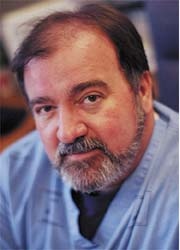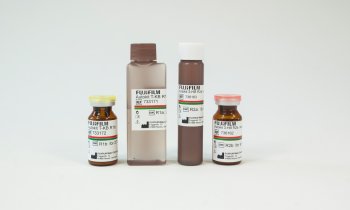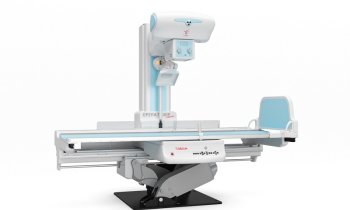Guess the best
Traditional or 30-minute CPR & AED training?
Basic cardiopulmonary resuscitation (CPR), particularly when performed immediately by those witnessing a cardiac or respiratory arrest, definitively saves lives - especially in witnessed cases of ventricular fibrillation (VF) and childhood drowning events. Nevertheless, the frequency of bystander CPR still remains mostly low. In turn, survival chances for potentially salvageable patients remain low, even in well-developed, rapidly-responding EMS systems.

Most people believe that learning to perform CPR is very important. However, the inevitable hurdle is getting them to the classroom. Communities that have experienced a relatively high frequency of bystander CPR and accompanying high survival rates for out-of-hospital VF have been those in which healthcare is a major industry, or where CPR training is provided for all students in their school systems. Therefore, widespread CPR training often requires a focus on captured audiences who are required to learn CPR.
Considering this concept, another key strategy to ensure widespread CPR is to require it (or make it easily available) in the general (non-healthcare) workplace. Anecdotally, when queried, many employers agree that having all their employees trained in CPR and the use of an automated external defibrillator (AED) is valuable, in that it creates a ‘safer workplace’ and also benefits the families of that workforce.
However, the problems lie in creating adequate time for a busy, productive workforce to be trained, and securing, scheduling and paying an adequate number of ‘certified’ instructors to do the training of, perhaps, up to thousands of workers. A traditional CPR-AED class takes 3-4 hours, and requires a ratio of one instructor for every five or six trainees, so logistic, financial, and productivity obstacles can become enormous – and other expenses need consideration (training equipment, instructor and/or location fees, catering, etc).
Training in under 30 minutes
The concept of teaching CPR and AED use in less than half an hour became a reality thanks to longstanding efforts of educational researchers, the American Heart Association (AHA) and the Laerdal Corporation (Stavanger, Norway). Using modern digital video disk (DVD) technology and adult learning principles, the 20-minute CPR course ‘CPR Anytime for Family and Friends’ was developed and launched about two years ago. Subsequent research demonstrated that by using this technique adults could learn CPR successfully within 20 minutes and perform basic CPR as well as those taught during a 3–4 hour traditional course.
During 20 minute training sessions conducted by a ‘facilitator’, each participant is told to open a large textbook-size box, which contains a small, inflatable manikin and a few other small components, including a facemask. The facilitator then plays a video for them to follow. After a quick, guided set-up, the trainees (numbering from 5 to even 500, depending on the logistics, video screen size and audio set-up) simply follow along as the video narrator demonstrates the techniques. First they learn chest compressions, then mouth-to-mouth ventilation and later integrate the two steps at a 30:2 compressions-to-breaths ratio. Then they practise for several more minutes. In fact, cumulatively, the trainees actually do more hands-on practice (almost continuously for about 17 minutes) than those taking traditional courses, because usually the latter must wait for another trainee to finish his or her session with one of the traditional bulky manikins.
Also in the 30-minute course, the facilitator also points out inappropriate hand placement or reinforce that the individual trainees follow the cadence of the person who serves as the CPR demonstrator on the DVD. Nevertheless, they do not need to be ‘certified’ instructors, nor do they need to spend several hours with students. Most importantly, two or three facilitators could easily manage a group of 60 trainees in 30 minutes, compared with the traditional 10 or 12 certified instructors needed for the 3-4 hour course.
Whilst the effectiveness of the AHA 20 minute CPR DVD course has been shown to be just as effective as traditional courses immediately at the end of course, the all important question remained: Could those learned skills be retained long term? Additionally, early pilot studies had not involved the critical skills of choking rescue and AED use. Accordingly, a recent study (comparing traditional 3-4 hour training for CPR, choking and AEDs to a modified half hour session for the same skills) examined both immediate performance of these life-saving skills and comparative performance six months later.
In that study, several hundred subjects, participating from various positions and diverse educational backgrounds, at the American Airlines administration headquarters in Dallas, were studied in a randomised, prospective manner. Their performances were compared using blinded evaluations involving both objective measurements and video recordings of performance. The evaluations were conducted both immediately following training and at the critical six-month juncture previously shown to be best correlated with long term retention of skills.
This so-called C-30 course (CPR, choking and defibrillation in 30 minutes) proved not only to be just as successful in terms of measured performance, but the results were the same when trainee skills were measured at the six-month time mark, thus also demonstrating excellent retention. In fact, AED use was superior using the five-minute training for this in the 30 minutes course, compared with the much longer traditional AED courses. Moreover, with no interim training to reinforce the initial demonstration of skills, 93% of the people evaluated at six months were judged to be operating the AED adequately.
Community-wide CPR training?
The success of the 30-minute CPR-Choking-AED courses is truly compelling. If an employer, church, or civic leader wants to host a lunch, or lunches, and supplies the inflatable manikins (available via www.cpranytime.org) to every employee, church member or constituent, the participants will not only return from a half-hour lunch-break knowing how to save a life, they also could take the training kits home and become facilitators for their families and friends. Thus, in the resulting ‘multiplier effect’, the number of trained lifesavers would grow.
Additionally, due to the sessions’ shortness and because few resources are needed for instructors and materials, more frequent re-training could take place to improve skill retention. So, one can envision such sessions being held routinely at the places mentioned as well as other potential mass training venues. A class could be held anywhere if a big video screen and adequate sound system is available.
Long-term results would likely be that more people in a given community would be trained in the latest CPR techniques, subsequently translating into many more lives being saved in coming decades.
Contact: Paul.Pepe@UTSouthwestern.edu
08.03.2007











